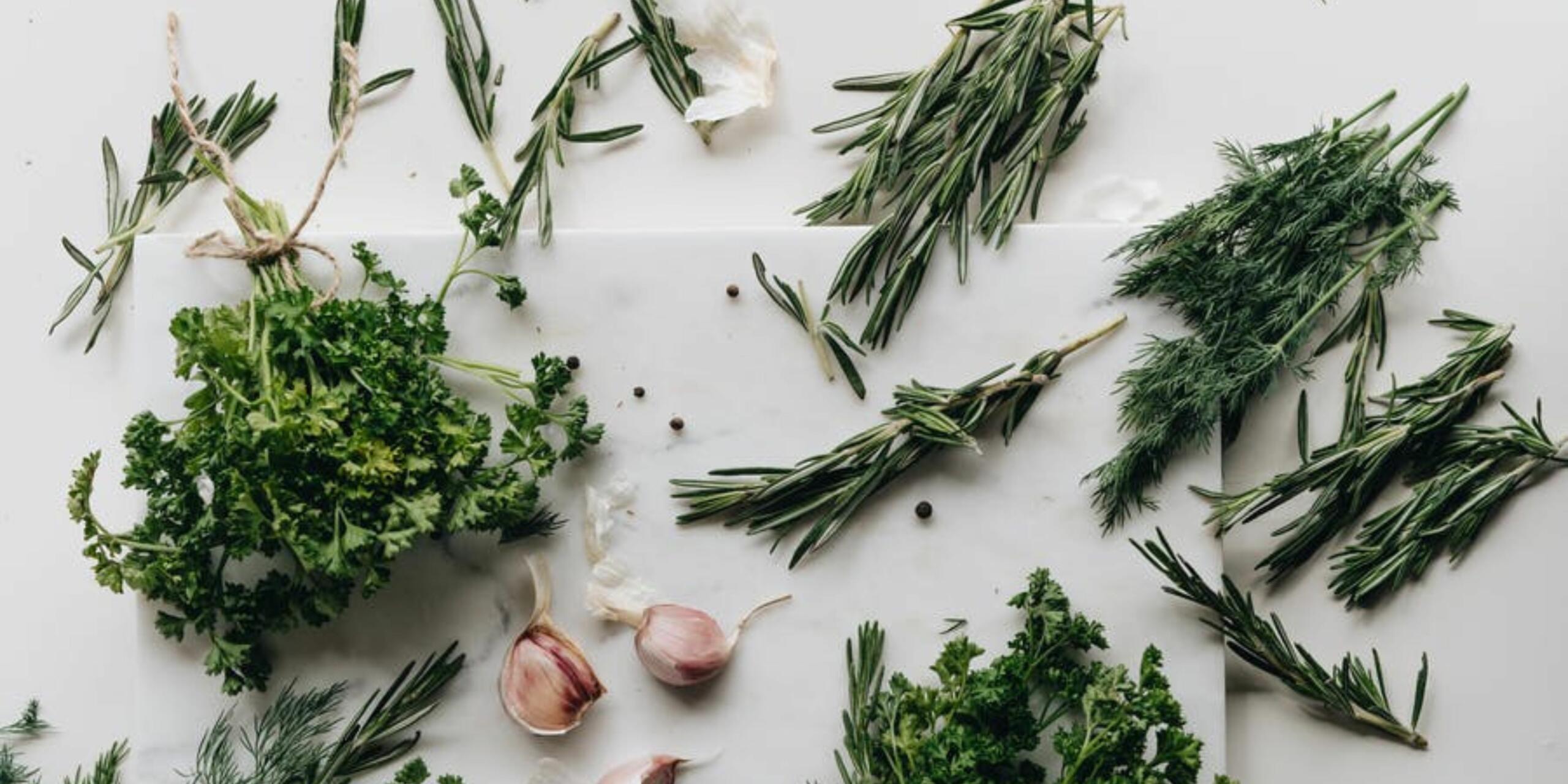5 best herbs to grow at home
The majority of herbs do best in full light in a protected location. Herbs can be grown indoors on a windowsill, outside in pots, or directly in the ground. For fresh leaves all summer, sow the seeds of annual herbs like basil and coriander every two weeks. Grow perennial herbs in the ground or in pots, such as oregano, rosemary, chives, and mint, and then collect the leaves as needed. Annual herbs should be saved for seed at the end of the season before being composted, while perennial herbs should come back the following year.
5 Herbs That Can be Grown At Home
1. Coriander

Thai, Chinese, Japanese, Indian, and Middle Eastern cuisines all frequently use coriander. The plant’s leaves, stalks, and seeds are all edible (which have a wonderful, orangey aroma). Every few weeks, sow coriander seeds for a constant supply of new leaves all summer long. From spring through fall, grow coriander in compost or damp but well-drained soil. Sow seeds every two weeks for a successful yield throughout the summer. Regularly water coriander plants, and harvest as needed.
2. Mint

Mint is quite simple to cultivate, however, it is best planted alone in a pot because it can smother other herbs that are growing nearby. From normal spearmint to chocolate mint and even ginger mint, there is a wide variety of mints to cultivate. Boiling young potatoes with freshly chopped mint leaves, or use to flavour homemade mojito cocktails and mint sauce. Mint can be grown in full sun to some shade in moist but well-drained soil. The ideal way to grow mint is in a container because, when planted in the ground, it can compete with nearby plants. While allowing some branches to bear blossoms for pollinators, harvest as and when necessary. Since mint is perennial, it grows again every year.
3. Thyme

Thyme has a modest stature but a powerful flavour. It tastes great with roasts, soups, and roasted vegetables. Gin also benefits from having it added. Similar to mint, thyme comes in a variety of cultivars with distinct aromas and flavours; lemon thyme pairs particularly well with seafood. Thyme may be grown in full sun and well-drained soil. Several thyme cultivars grow well when planted on gravel beds, pavement cracks, or as a lawn substitute. Others do best in pots, which you may bring indoors in October. Trim the thyme after it flowers and protect winter-sensitive plants.
4. Lemon Balm

Lemon balm is a bushy perennial herb that blooms in the summer with creamy-white or pale purple flowers and leaves that have a pleasant lemon aroma. It is strong and easy to grow in the sun or mild shade. The leaves produce a zingy lemon tea and a lemony boost for salads, sauces, and fish preparations. From spring forward, young plants that were grown from seeds or purchased seedlings can be transferred outdoors. Named cultivars are typically only offered in spring as ready-grown plants. Before and following planting, give the plants plenty of water. Choose a planting location with moist soil that drains freely that is in the sun or mild shade. A 20cm (8in) container would be suitable for planting lemon balm in large pots filled with soil-based compost.
5. Basil

Basil is one of the simplest herbs to grow indoors, and both gardeners and cooks should have some on hand because of its excellent flavour and widespread use in cooking. Basil plants planted indoors can be equally as successful as those grown outside, if not more so, given the right conditions. Basil grows quickly, establishing in just three to four weeks, and is best planted in the early spring outdoors or year-round inside. The plant has clusters of tiny, shiny green leaves that smell strongly of something.
Here are some other blogs which make your Green Space Greener!
- Gardening Calendar Blogs
- Sustainable Gifting Ideas
- Gardener Stories
- Garden Care Blogs
- Miniature Garden Decor
- Gardening Workshops
Have a look at some amazing Videos of Gardening that might help you!
- Tips on planting homegrown plants and creating art with them as a beginner.
- How to preserve, plant, and grow flower seeds in monsoon, winter, and other seasons.
- Growing different vegetables, winter vegetables especially, and tips and tricks to preserve.
- Preserving fruits such as strawberries, Papaya, watermelon, muskmelon, etc.
- Know all about microgreens using examples such as microgreen spinach, microgreen sunflower, microgreen mustard, microgreen flax, etc.
- Using gardening tools such as pots, trays, growing bags, moss sticks, watering cans, etc.
Here are some Workshops that might help you if you are new to Gardening!
- Convert your green space into a small Kitchen Garden.
- Know more about your Medicinal plants and their care.
- Know how to start your own small Garden.


Thank you for sharing this informative post! I’m a beginner gardener, and I’ve been wanting to start growing herbs. Your list of the best herbs to grow at home is perfect for someone like me.
Great article! I found your tips on time management extremely helpful. I’ve struggled with managing my time effectively, and your suggestions have given me some new strategies to try. Thank you for sharing your insights!
I appreciate the research and effort you put into writing this blog post. It’s well-written and easy to understand.
Great blog post! The information provided was insightful and well-researched. I particularly enjoyed the practical tips and suggestions shared. Looking forward to reading more from you
Very nice and informative blog. It was a good read. I was looking forward to grow some herbs indoors this month and fortunately came across this blog! Loved it.